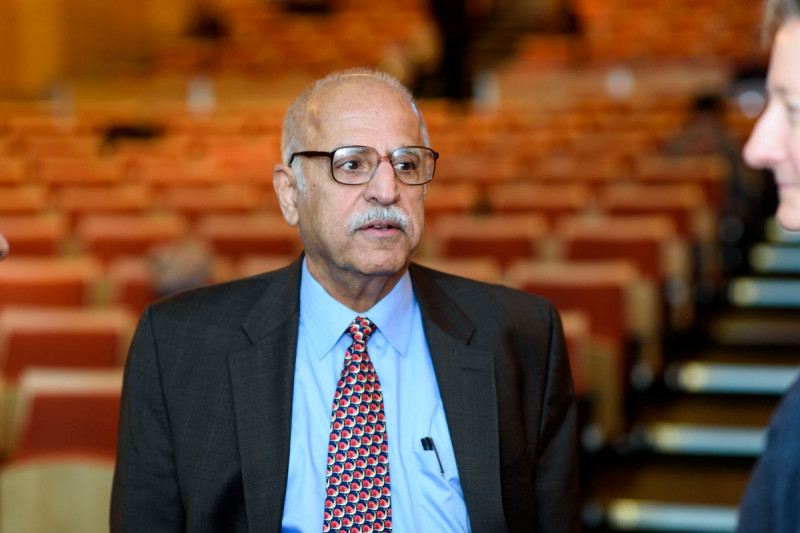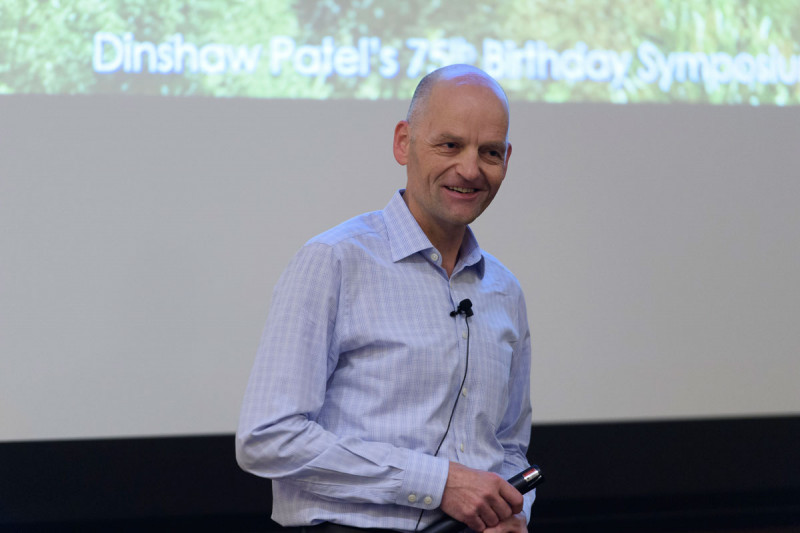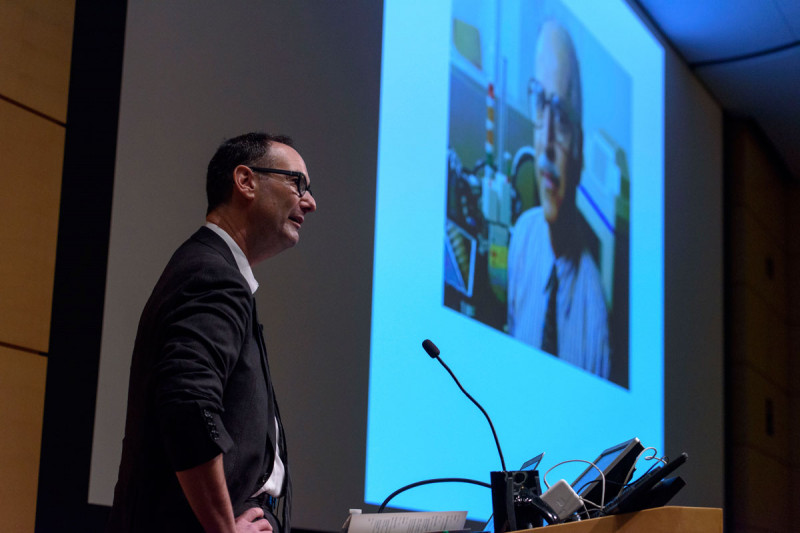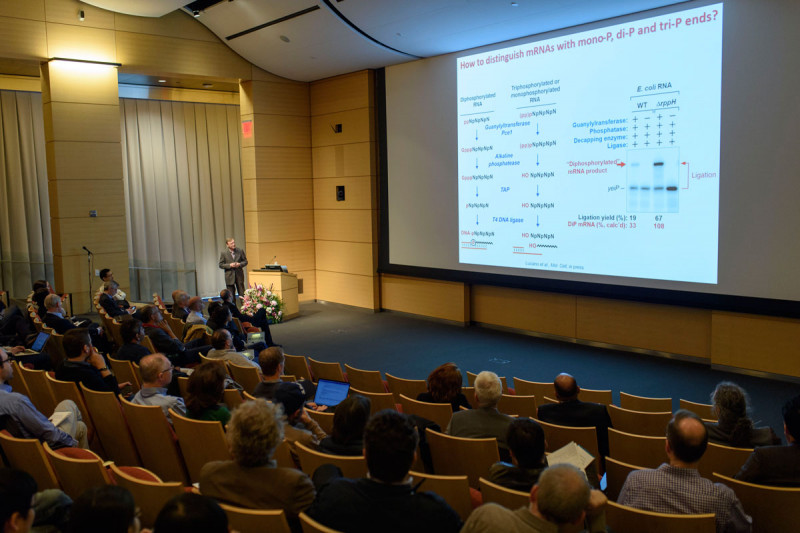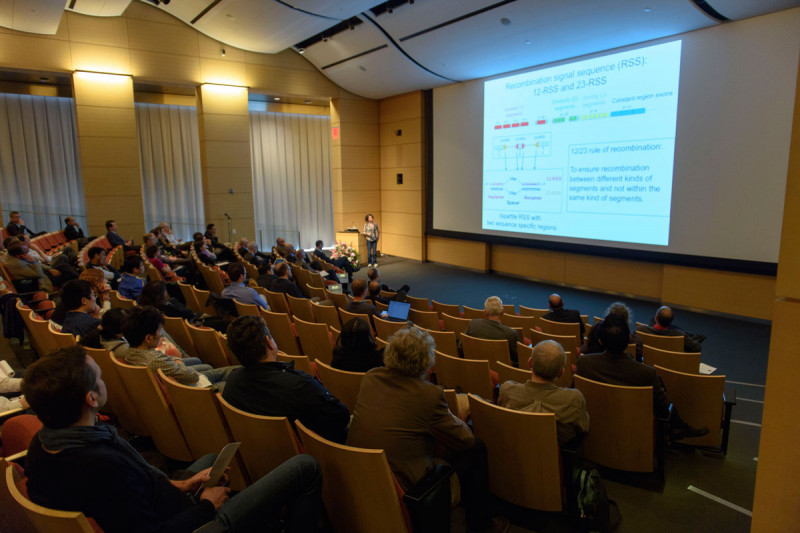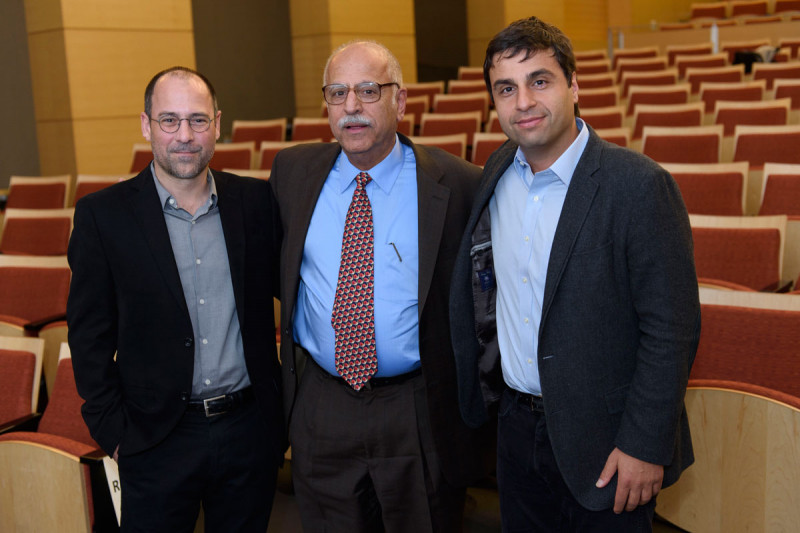On Friday, May 12, scientists convened at the Zuckerman Research Center at Memorial Sloan Kettering to celebrate the pioneering and vast accomplishments of structural biologist Dinshaw Patel on the occasion of his 75th birthday. Dr. Patel is known worldwide for his many contributions to our understanding of how important biological molecules function, by way of decoding their structure.
A member of the National Academy of Sciences, Dr. Patel holds the Abby Rockefeller Mauzé Chair in Experimental Therapeutics at MSK and is a faculty member in the Structural Biology Program at the Sloan Kettering Institute (SKI).
“To this very day, wherever biology has gone with its frontiers, there has been and there will be Dinshaw,” SKI Director Joan Massagué said in his introductory remarks. “It is nothing short of spectacular to watch this saga of discovery.”
The daylong symposium was called “From Structure to Function: Gene and Epigenetic Regulation” and featured talks by scientists from around the world. It was divided into sections devoted thematically to the several large areas to which Dr. Patel has made seminal contributions, including RNA, DNA, proteins, and epigenetics. Former student Hashim Al-Hashimi, now of Duke University, and colleague Christopher Lima, of MSK, organized the conference.
Storied Career
A native of India, Dr. Patel received his bachelor’s degree from the University of Mumbai, his master’s degree from the California Institute of Technology, and his PhD from New York University — all in chemistry. After finishing his graduate studies, he switched his focus to biology, where his training in the physical sciences proved extremely valuable.
Dr. Patel “brings the rigor and the exacting quantitative and analytical mind-set of a chemist and a biophysicist to biology,” Dr. Massagué said.
For 17 years, he was a scientist at Bell Labs, where he was “given the freedom to work on biological systems while being employed by the phone company,” Dr. Patel recalled. It was at Bell Labs that he began foundational work on carcinogens — molecules that cause cancer by producing mutations in DNA. He helped scientists understand which types of DNA damage are easy to repair, and showed that — unexpectedly — it is changes that don’t distort the molecule too much that can be some of the most dangerous. These alterations more easily evade recognition and repair by the cell.
Dr. Patel continued this work at Columbia University in New York, where he moved in 1984 to set up a lab in structural biology.
Eight years later, in 1992, he received a call from biochemist James Rothman, who explained that he was assembling a new program in biochemistry and biophysics at SKI and wanted to know if Dr. Patel could recommend anyone. Dr. Patel suggested a young scientist by the name of Nikola Pavletich, who is now Chair of the Structural Biology Program at SKI.
“You can say many things about me, both good and bad,” Dr. Patel said, “but you have to concede that I can spot talent.”
Dr. Patel also allowed himself to be lured to MSK by then President Paul Marks. Among the perks of working at MSK was what Dr. Patel called “location, location, location” — its proximity to both The Rockefeller University and Weill Cornell.
Master of Trades
Dr. Patel’s original area of expertise was using a technique called nuclear magnetic resonance spectroscopy to study the structure of biological molecules. In about 2000, he made what Dr. Massagué called an “epochal change,” embracing x-ray crystallography as an additional tool. This is a famously challenging and labor-intensive technique, but Dr. Patel quickly mastered it. Over the course of several years, he used x-ray crystallography to determine the structure of several key biological molecules, including a variety of RNA-based riboswitches, ribozymes, and several molecules involved in RNA interference.
Within the last decade, he has made important contributions to the rapidly expanding field known as epigenetics. This discipline concerns itself with how DNA is packaged up with proteins called histones to form chromatin. He has collaborated with several investigators in this field, including David Allis from Rockefeller and Steve Jacobsen from UCLA.
Dr. Patel joked that he was considering slowing down, but with the emergence of cryo-electron microscopy, he said there is now more to do. This powerful technique has certain advantages over x-ray crystallography. Researchers have been using it to determine biological structures in high-resolution atomic detail.
In remarks he gave at the end of the symposium, Dr. Patel thanked his family for their patience and indulgence of his “obsessive commitment to science.”
He also expressed gratitude to the many scientists who attended the conference and spoke about his influence. “In some ways, I hardly recognize the person you’re talking about,” he said.
